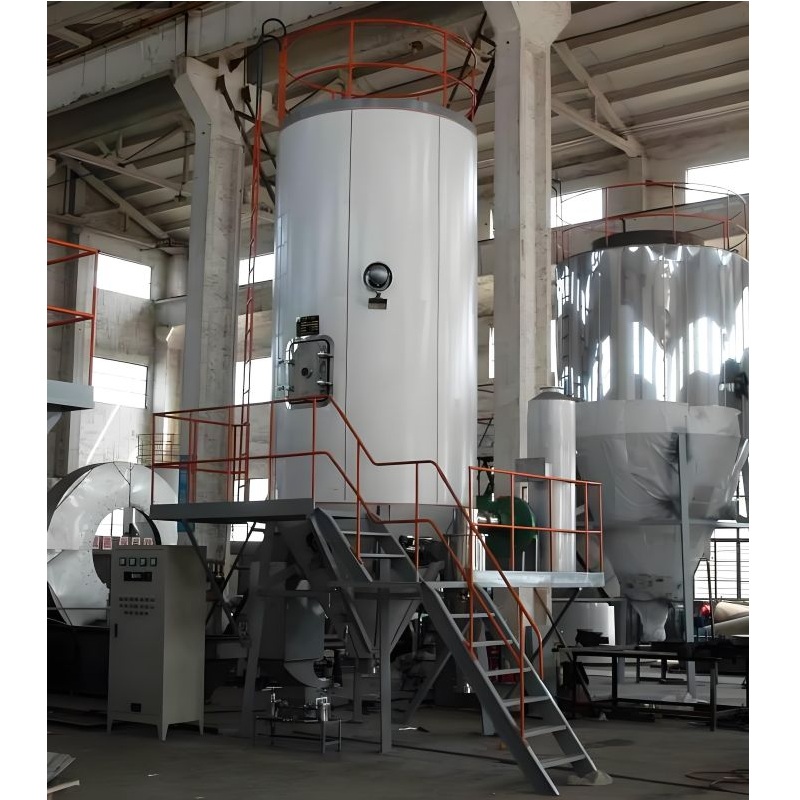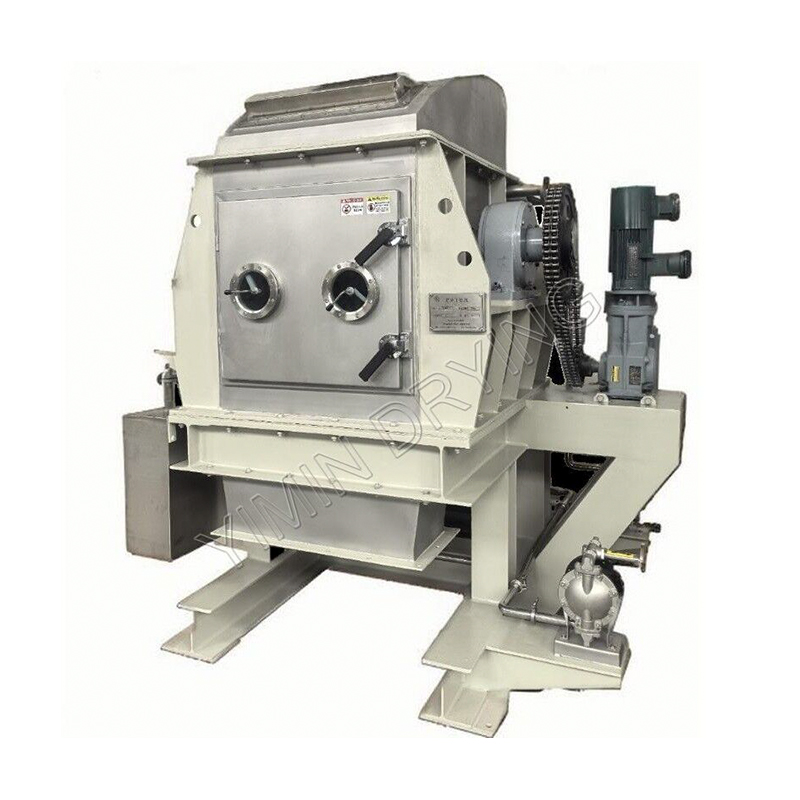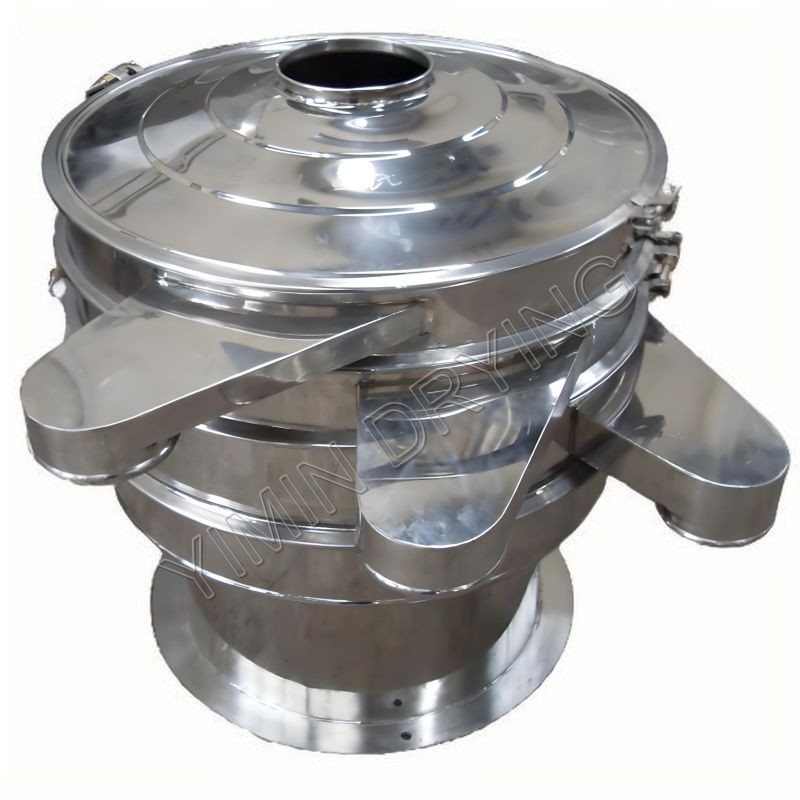What is the use of spray dryer?
Primary Use: Producing Dry Powders from Liquids
The core function of a spray dryer is to transform a liquid feed (which can be a solution, suspension, emulsion, or even a melt) into a stable, free-flowing powder. This is achieved by rapidly evaporating the solvent (usually water, but can be organic solvents) from tiny droplets of the liquid.
How it Works (Simplified Process):
Feed Atomization: The liquid feed is first pumped into an atomizer (often a nozzle or a rotary disc). This atomizer breaks the liquid down into a fine mist of tiny droplets. The size of these droplets is crucial as it directly affects the final powder particle size.
Drying: These fine droplets are then introduced into a drying chamber where they come into contact with a stream of hot gas (typically heated air, or nitrogen for flammable/oxygen-sensitive materials). The large surface area of the tiny droplets allows for extremely rapid heat and mass transfer. The solvent quickly evaporates from the droplets, leaving behind solid particles.
Solid Separation: Once dried, the solid powder particles are separated from the drying gas. This is often done using cyclones, bag filters, or a combination of both, which efficiently collect the powder.
Key Advantages and Why Spray Dryers Are Used:
Single-Step Process: It directly converts a liquid into a powder, simplifying production processes and often improving efficiency and profit margins compared to multi-step drying methods.
Rapid Drying: The large surface area created by atomization allows for very quick drying times (often in milliseconds). This is crucial for heat-sensitive materials as it minimizes exposure to high temperatures, preserving their properties (e.g., flavor, aroma, active ingredients).
Precise Particle Size and Morphology Control: By adjusting parameters like atomization pressure, feed rate, and inlet temperature, manufacturers can precisely control the size, shape, and structure of the resulting powder particles. This is vital for applications where consistent particle characteristics are critical (e.g., drug bioavailability, flowability of powders).
Versatility: Spray dryers can handle a wide range of liquid feeds (solutions, suspensions, emulsions) and produce various types of powders (fine powders, granules, hollow particles, amorphous solids).
Encapsulation: It can be used to encapsulate active ingredients within a protective matrix, improving stability, masking taste, or controlling release rates.
Hygienic Conditions: The enclosed nature of the process helps maintain hygienic conditions and prevents dust in the working environment, which is important in industries like food and pharmaceuticals.
Common Applications Across Industries:
Spray dryers are indispensable in numerous industries:
Food Industry:
Milk powders: Instant milk, infant formula, whey powder.
Instant coffee and tea: Converting brewed extracts into soluble powders.
Egg powders: Dried egg products.
Fruit and vegetable powders: For instant drinks, flavorings, natural colorants.
Flavorings and spices: Preserving flavor and aroma.
Starches and derivatives, sweeteners (e.g., stevia), enzymes, food additives.
Pharmaceutical Industry:
Drug formulation: Producing powdered active pharmaceutical ingredients (APIs) for tablets, capsules, and other dosage forms.
Improving solubility and bioavailability: Creating amorphous solid dispersions for poorly soluble drugs.
Encapsulation: Protecting sensitive drugs, taste masking, or controlled release.
Vaccine production: Converting vaccine components into stable powder forms.
Inhalable drugs: Engineering powders with precise particle sizes for pulmonary and nasal delivery.
Chemical Industry:
Catalysts: Producing uniform catalyst particles.
Pigments and dyes: Drying slurries and solutions to create consistent color products.
Detergents: Manufacturing powdered detergents.
Resins and polymers: Converting liquids into powdered forms.
Ceramic powders: Producing fine, consistent powders for various ceramic products.
Other Industries:
Biotechnology: Drying enzymes, proteins, and other biological materials.
Agricultural: Producing animal feed, fertilizers, and pesticides.
Cosmetics: Drying ingredients for various cosmetic products.
Environmental: Drying waste streams.
Materials for Lithium-Ion Batteries.
In essence, whenever there's a need to transform a liquid into a high-quality, free-flowing powder, especially for heat-sensitive or precisely engineered materials, a spray dryer is a leading choice.




 English
English русский
русский عربى
عربى Türk
Türk




